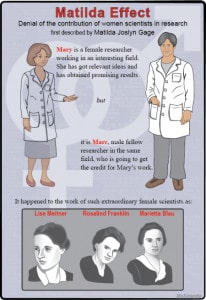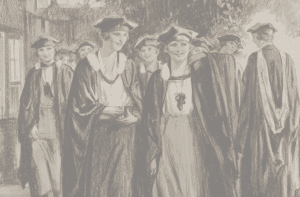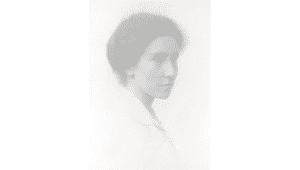Clara Immerwahr was the first woman in Germany to receive a doctorate in chemistry. A week before her death, Clara’s husband had orchestrated the first chlorine-gas attack of World War I at Ypres, Belgium, in an attempt to break the military stalemate in Germany’s favour. Clara Immerwahr committed suicide on the 1st of May 1915 at party thrown in her husband’s honour. Did you ever study the Haber-Bosch process and the production of chemical fertilisers? Fritz Haber was her husband, a figure who embodies the good and evil of modern science.
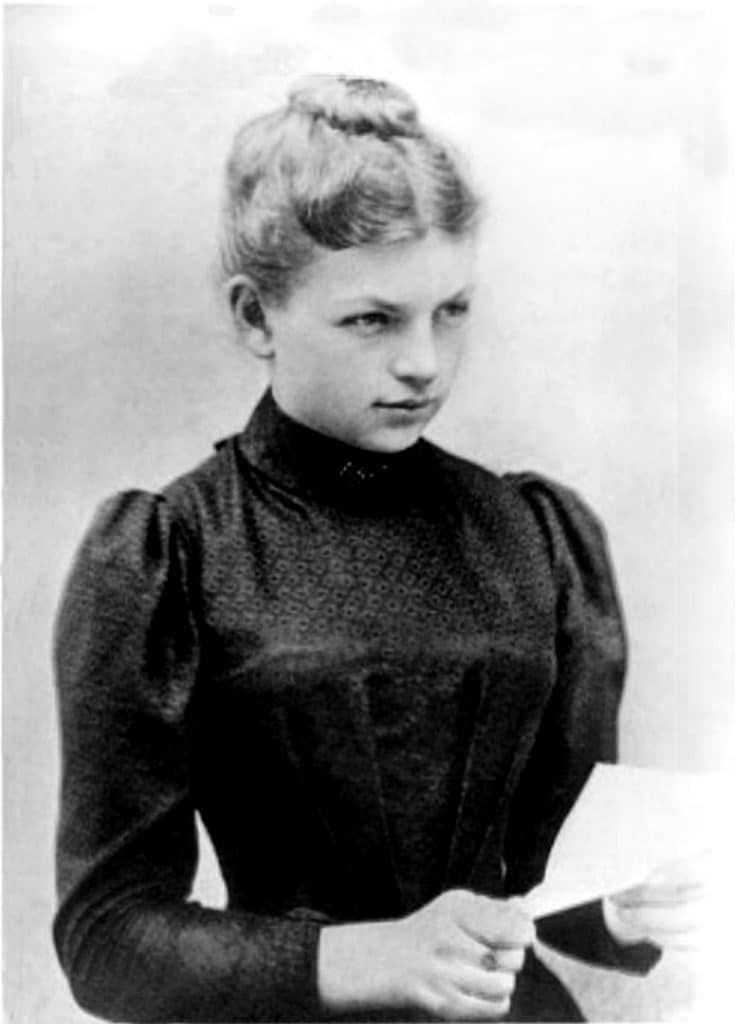
Clara Immerwahr was born on the 21st of June 1870 to a middle-class, wealthy Jewish family outside of Breslau (now Wrocław in Poland). Her father was a PhD chemist who was unable to pursue an academic career due to his religious background. Instead, he worked as an agronomist and became a successful merchant. During the second half of the 19th century, Breslau was a prosperous metropolis, becoming a centre for science, culture and business. It harboured the third largest Jewish community in Germany, which was academically oriented and represented the city’s “intellectual aristocracy,” to which also the Immerwahrs belonged. Clara Immerwahr was an eager student interested in science who dreamed of studying at the University of Breslau. Although the Immerwahrs valued education for all, both boys and girls (40% of female students at the higher schools in Breslau were Jewish), German law prevented women from enrolling in college courses at the time. She attended a women’s school in Breslau that “provided a basic education for young women that was compatible with their social status and to prepare them for their ‘natural purpose’; that is, as companions of their husbands, housewives and mothers”. To support her education, Clara’s father hired a private tutor, and she finished her studies in 1892, at the age of 22.
In 1896, she passed a special examination that qualified for higher education studies and was finally admitted to the University of Breslau. Still, her opportunities were far more limited than those of her male peers. Women were not then legally admitted as university students; they could only attend lectures as guests with the permission from faculty professors and administrators. She got the support from Richard Abegg, who worked on physical chemistry and became her supervisor. As a graduate student, Clara began exploring the solubility and electrochemical behaviour of heavy metals salts. Like many women today, she enjoyed her research but found the life of a female student difficult; Clara exchanged frequent letters with Abegg describing the unfair treatment by her colleagues in a male-dominated environment. In December 1900, she successfully defended her thesis, becoming the first woman in Germany awarded a doctorate Magna Cum Laude in chemistry. The day she got her doctorate she took an oath “never in speech or writing to teach anything that is contrary to my beliefs. To pursue truth and to advance the dignity of science to the heights which it deserves.” After her graduation, Clara continued working with Abegg as an unofficial assistant professor and lectured on chemistry at local women’s organisations. She published several articles based on her research in major German chemistry journals.
However, after finding her place in academia, she lost it later on to the path her personal life would take. In Breslau’s Jewish community she had met Fritz Haber at a dancing class in 1885 and he fell in love with her. Clara declined his first offer of marriage because she wanted to be economically independent, prioritising her studies and research. However, shortly after defending her dissertation, they got in touch again, sharing their passion for science. By 1901, Haber was a rising star in the world of physical chemistry for his research in electrochemistry and thermodynamics. He invited Clara to attend a chemistry conference in Freiburg (she was the only woman) and proposed again, getting married a few months later. Clara then moved to Karlsruhe, where Haber was appointed professor at the Technological University in Karlsruhe.
Although she would never again conduct research of her own, her perseverance allowed her to continue her academic life in her new city, attending meetings at the Chemical Society and conducting public lectures on “Physics and Chemistry in the Household”. Always in her husband’s shadow, her work was overlooked in male-dominated university circles and most people naturally assumed her lectures had been written by her husband. She failed to secure a permanent job and in 1902 the birth of their only son and the overwhelming household tasks expected of her set an ending to her scientific career in chemistry. Two years later they moved to Berlin, where Haber helped establish the Kaiser Wilhelm Institute for Physical Chemistry and Electrochemistry, becoming the founding director.
In 1914, with the onset of World War I, Haber volunteered himself to work as a consultant of the Ministry of War in Berlin. He placed his laboratory at the service of the German government and led a chemistry section investigating the production of nitrogen for munitions and fertilisers, beginning to work on pesticides and poison gas as a weapon of war. While the coming years were extraordinarily productive for Haber, Clara became increasingly depressed. Haber’s career culminated in his successful synthesis of ammonia from nitrogen and hydrogen gas (the Haber–Bosch process, also known as the “detonator of the population explosion”), revolutionising agriculture worldwide and winning the Nobel Prize in Chemistry for this accomplishment in 1918. In contrast, Clara had an unhappy life playing the role of a professor’s wife devoted to running her household and occasionally visiting her husband’s laboratory or reviewing drafts of his publications, which he dedicated to his “beloved wife, Mrs. Clara Haber, Ph.D., with thanks for quiet collaboration”. In 1909 she would admit to Abegg in a letter that “what Fritz has gained during these last eight years, I have lost, and what’s left of me, fills me with the deepest dissatisfaction”.
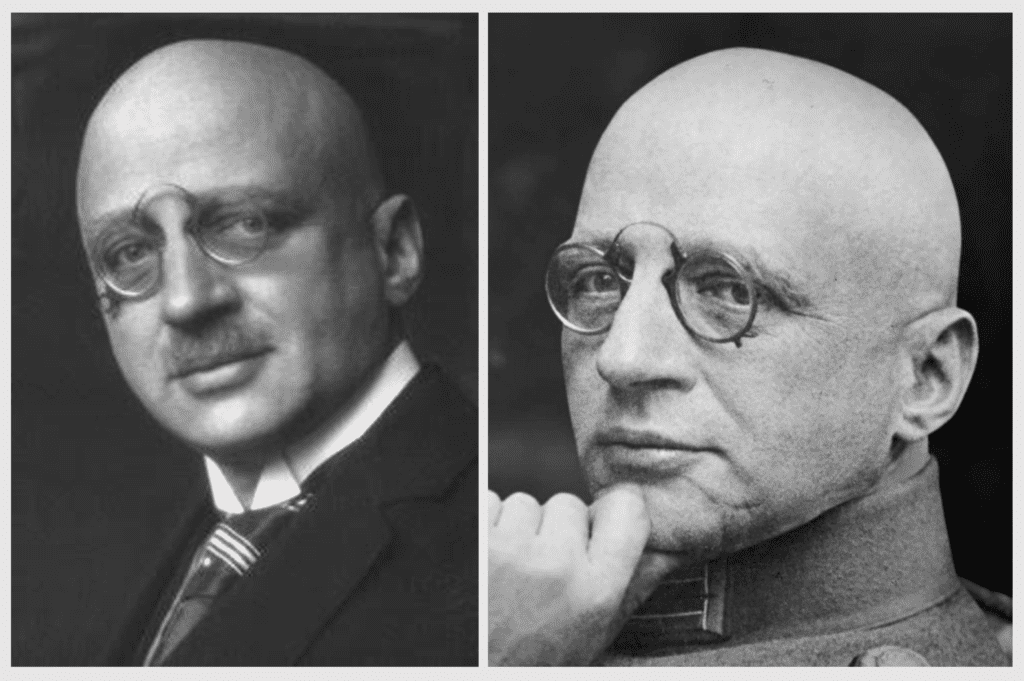
A controversial scientist, Fritz Haber is known as the father of modern agriculture but also as the father of modern chemical warfare. Clara came out in open opposition to his work, considering it a “perversion of the ideals of science” and pleading several times to cease his work on gas warfare. In April 1915, after weeks waiting for ideal winds, the German army launched more than 168 tons of lethal chlorine gas over allied troops in Ypres under his guidance. A sickly cloud, described as “a yellow low wall”, responsible for more than 5,000 deaths out of the 7,000 casualties that day by asphyxiation within minutes. All the allied soldiers could use as protection over their mouth was their handkerchiefs. Countless additional gas attacks resulted in the deaths of at least 100,000 soldiers on both sides, so sophisticated gas masks and protective clothing had to be designed, becoming a symbol of WWI. The successful attack would earn Haber a promotion to the rank of captain and a celebratory party at his place in Berlin on the night of the 1st of May 1915. That night, their differences led to an argument, and after writing a series of farewell letters, Clara Immerwahr took Haber’s military revolver and took her own life in the garden of their house. Clara was found dying by their thirteen-year-old son Hermann (who will also commit suicide in 1945). Haber, for his part, woke up the next morning and took a train to supervise the next use of chlorine gas in the attacks on the Eastern front. Clara Immerwahr’s story has become inextricably connected with the social and moral responsibility in science. As a role model in civic courage, the “Myth of Clara Immerwahr” has been featured in stage plays, documentaries, books and multiple films, and she is the namesake of several awards. Despite the many uncertainties around her death, Clara Immerwahr’s scientific achievements and courage make her a pioneer and a remarkable woman despite the challenging circumstances of her life and time.
By Carmen Sánchez Cañizares, @carmen_agro. Postdoctoral researcher at University of Oxford, UK.
More information:
- B. Friedrich and D. Hoffmann (2017).
- Encyclopedia entry at The Shalvi/Hyman Encyclopedia of Jewish Women: “Clara Immerwahr”, by Jutta Dick (2021).
- Blog post at Chemistry World: “Clara Immerwahr – out of her husband’s shadow”, by Bárbara Pinho (2021).
- Blog post (in Spanish) at Blog Mujeres Con Ciencia: “Clara Immerwahr (1870-1915): la química que plantó cara a Fritz Haber”, by Uxue Razkin (2019).
- Blog post at Distillations: “Casualty of War”, by Ryan Carty (2012).
- Blog post at Nursing Clio History: “Clara Immerwahr: Science’s Tragic and Surprisingly Modern Heroine”, by Kristen Vogt Veggerberd (2020).
- Blog Post at Mission.org: “The Tragedy of Fritz Haber: The Monster Who Fed the World”,by Paul Barach (2016).

